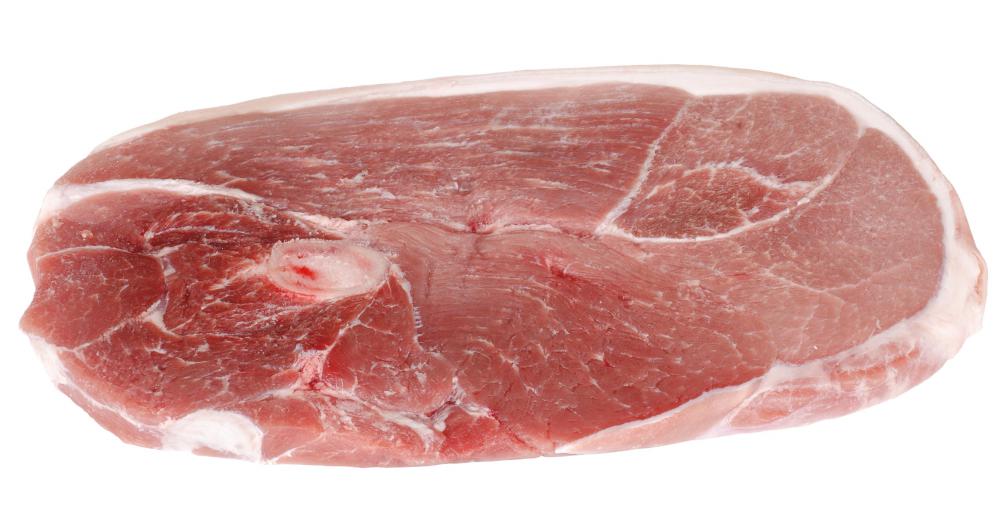At DelightedCooking, we're committed to delivering accurate, trustworthy information. Our expert-authored content is rigorously fact-checked and sourced from credible authorities. Discover how we uphold the highest standards in providing you with reliable knowledge.
Why is Rare Meat Considered Dangerous?
Many consumers and cooks are warned against eating uncooked or extremely rare meat, because of associated health risks. Meat is often contaminated with bacteria, including salmonella and listeria, which can be killed by cooking at a proper temperature. Meat that is rare may still contain living bacteria that can cause infection resulting in intestinal discomfort and in rare cases, death. If prepared safely, some red meat can be eaten rare, while white meat, including poultry and pork, should never be eaten rare.
Rare meat is meat that has been minimally cooked, leaving the inside still red and tender. For beef, lamb, and veal to be considered safe, it should generally be heated to at least 145°F (about 62°C). Ground versions of these meats should be cooked to at least 160° F (about 71° C). Meat that is not cooked to this temperature will still contain living bacteria. Cooks should use a meat thermometer to ensure that meat is cooked to a safe temperature. Consumers should avoid eating meat that is raw or extremely rare, including steak tartare, because of the risk of infection.

Since most bacteria accumulate on the outside of meat, searing it will eliminate most of the risks. Consumers should be aware that pockets of bacteria may still exist inside, however, and that for true food safety, the meat should be evenly cooked all the way through. When cooking for pregnant women and people with compromised immune systems, chefs should always cook meat thoroughly.

Basic safety procedures should be used when handling any meat, especially when it's rare. Meat labels generally indicate what temperature it should be kept at, and meat should be kept under proper refrigeration at all times, or frozen if not being used immediately. Meat should always be prepared separately from other foods. The knives and cutting boards used to prepare meat should be washed and sterilized thoroughly to prevent cross contamination. Leftover cooked meat should be covered and immediately refrigerated or discarded. Since leftovers generally do not keep more than two or three days, they should be eaten quickly. Also, since meat can collect bacteria if reheated, it should be reheated only once.

Poultry, mixed meats, and pork should never be eaten rare. In the case of mixed meats, grinding the meat will spread bacteria throughout the mixture. Small areas of bacteria may survive cooking at a low temperature. In the instance of pork and poultry, Toxoplasma and Trichinella are often present, and will not be killed by low heat. Pork should be cooked to an internal temperature of at least 145°F (about 62°C), while poultry should be cooked to between 165° and 175°F (about 73° to 79°C). Rare meat can be extremely dangerous, depending on the source and the species, or delicious if handled appropriately. As with any food, if a person is in doubt, he or she should throw it out.
AS FEATURED ON:
AS FEATURED ON:
















Discussion Comments
Taenia saginata is what concerns me.
Indeed, if the meat isn't thoroughly cooked, the risk of consuming bacteria is present.
That's not the case with steak, though. With that the bacteria is almost always only on the outside. That's why it's safe to eat it rare.
Meats have to reach a certain temperature before the bacteria is killed. Bacteria can be present inside of meats just like it can be present inside of you.
This article seems to hint that eating rare steak is dangerous. So long as the meat is fresh, and your cooking utensils are clean, then you will have no problems. The bacteria only live on the outside of the meat, and once cooked, even for 20 seconds, are killed.
Just avoid any contamination from the raw meat and the cooked meat and you're all good.
Post your comments